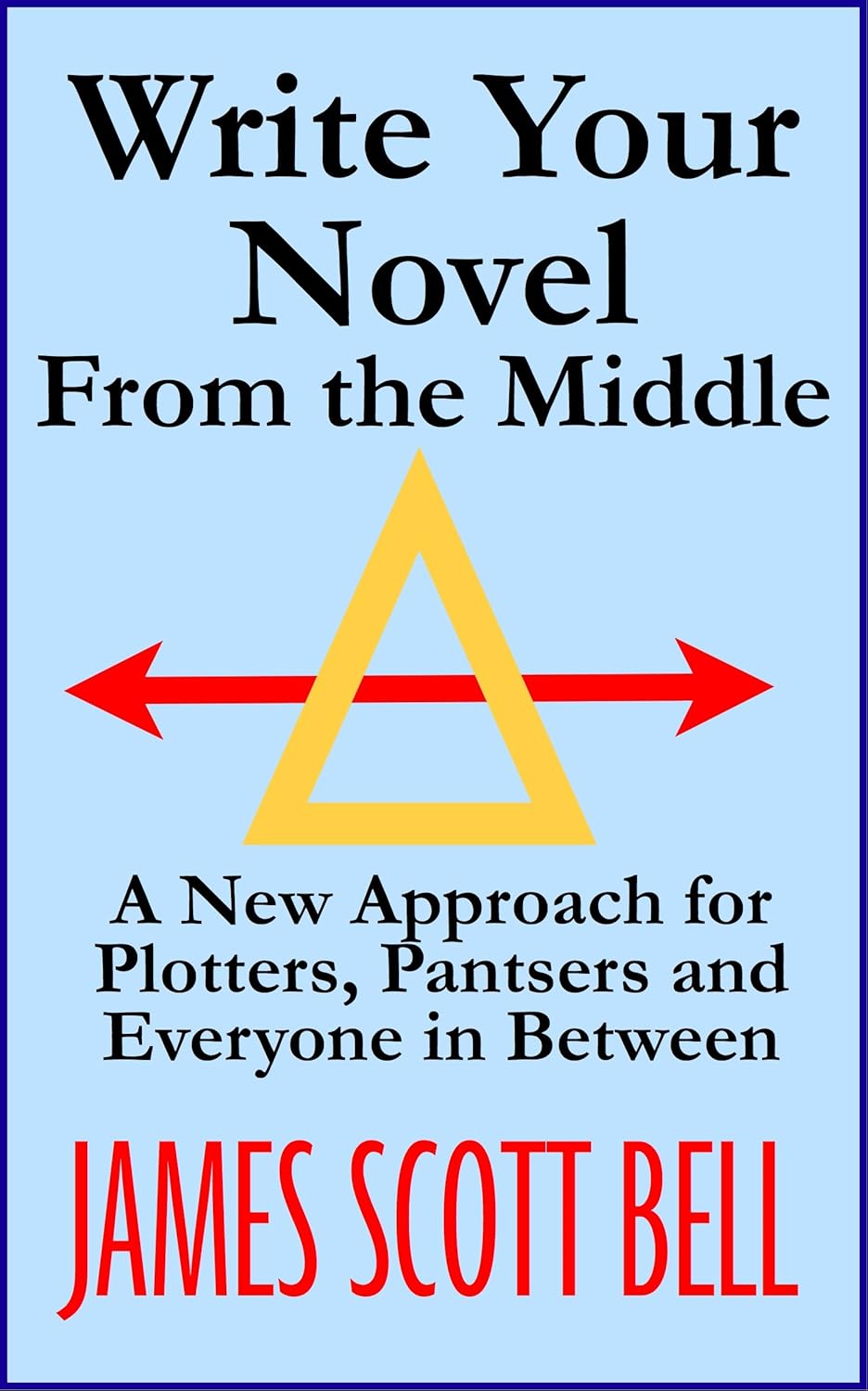Howdy, Folks! (Shut up, I'm going to the State Fair of Texas tomorrow and I'm excited.)
This week I'm reviewing a book I actually found on Pinterest of all places. They've been recommending things similar to what I pin as part of their whole metadata setup, and this one actually was useful. (Marketing. Sometimes, it does what it's supposed to!) This is the site it led me to. I was intrigued more by the title of the book than by what the blogger had to say. This is not to say anything bad about her post, but rather that I realized that all of the novels I had written (count 'em, three) had this one part in the middle where I kind of felt like I waved my hands and the plot moved on because I had no idea how to get the characters from half #1 to half #2. Things fell apart a little bit. So I looked up the book.
It was only a few bucks, and short to boot, so I bought it and gave it a read. It made me think about my previous novels and Spitfire, my novel to come. I switched up some parts of my proposed plot for Spitfire after reading this and his methods helped me feel like I had a more balanced plan for this story.
The midpoint is a moment where you figure out what the story is about.
This, at first, sounds ridiculous, because who would want to read a story they couldn't figure out until halfway through? But if you think about it, this doesn't mean what the plot is about. This statement means the midpoint is where the reader figures out what the message of the story is going to be.
A story of three acts has two distinct points separating the acts:
 |
| I'm gonna eat this much fried food! (State Fair of Texas) |
 |
| Amazon |
Here's some of the things Bell discusses in this book that helped his method click for me (backed up by multiple examples in the book):
The midpoint is a moment where you figure out what the story is about.
This, at first, sounds ridiculous, because who would want to read a story they couldn't figure out until halfway through? But if you think about it, this doesn't mean what the plot is about. This statement means the midpoint is where the reader figures out what the message of the story is going to be.
A story of three acts has two distinct points separating the acts:
1) forces character from their previous world into a new one
2) makes possible or inevitable the final battle and resolution
You're probably saying, "Yes, Madeline, this is Three Act 101." Yes, well, intentions, execution, and interpretations after the fact are all different things. If I already have a story I want to tell, and I overlay this form on top of it, I can see where I need to add girth and where I need to trim. I built my first plot on this scaffold, yes, but now I have a plot that I'm cutting to fit the scaffold. Spitfire has a logical sequence of events planned already, so I don't have to invent bad things to happen to my characters on the fly to make the story fit this mold. I can just adjust.
Notice that Act III has a "resolution" but does not say whether it is a success or rejection. Another thing this book helped me come to terms with is that I do not naturally write happy endings to my stories. I tend to write endings where bad stuff happens. I'm okay with this, I think. I might elaborate on it in the future.
Stories in the three act structure tend to be shaped like this:
pre-story psychology -->>mirror moment-->>transformation
(Bell has a nice picture in the book that makes this diagram look like a triangle.) You're probably doing more head-shaking right now, but bear with me. Using this formula, you can always get a complete story.
We have a character that has some history before we meet her. Even if she's born in sentence #1, she is born into a culture that will affect her for the rest of her life. "What if she's born into a void?" you ask. Don't you think that will affect her too? Everyone has a metaphysical place they come from that shapes them as characters. At the midpoint of our story, the character will either have to face herself, her odds, or both, and decide whether she is going to overcome or succumb. At the end of the story, we see the arc complete, whether our character has decided to change themselves, the world, or reject one or both kinds of change.
Almost every story can be boiled down into this formula.
Using the formulae discussed in the book, you can create a great story, be ye planner, pantser, or plantser.
That's right. It doesn't matter how you like to write or which way you think is "correct;" at the end, we all want our finished products to be complete, presentable, and compelling. You can use these strategies to think about plot ideas you've been ruminating on but haven't acted on yet, like I did with Spitfire. You can apply them to works in progress when you feel like you're getting a little off course. You can write completely seat-of-your-pants, because that's how you get your mojo to flow, then come back with this structure for your first edit and keep what's good, rearrange that which needs it, and cut the rest.
If you're planning on doing NaNoWriMo this year, or if you're just curious, check out this book. You might notice above that I said "three act structure" specifically. Not all stories are built in the three act structure. Look for a post on alternate structures in the future. Also, as of tomorrow, this blog will be a year old! Next week will be the party post, with favors and presents and cake. And you're invited! See you there!
Comments
Post a Comment